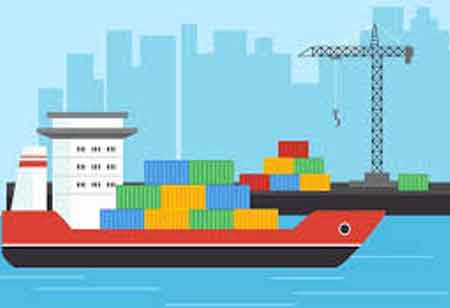THANK YOU FOR SUBSCRIBING
THANK YOU FOR SUBSCRIBING

By
Logistics Transportation Review | Thursday, October 30, 2025
Stay ahead of the industry with exclusive feature stories on the top companies, expert insights and the latest news delivered straight to your inbox. Subscribe today.
Fremont, CA: Shipping containers are big, sturdy metal boxes for long-distance freight transportation. Generally employed for shipping by road, rail, or sea, standardized or general-purpose containers facilitate cargo handling, stowing, and transportation of commodities. These have introduced economies of scale and improved the efficiency of international shipping of commodities.
Placing the Order
The first stage is when an importer or consignee places an order with a manufacturer, supplier, or consignor. The supplier provides the importer with an estimate of the total cost of the items in the form of a quote or proforma invoice (preliminary bill of sale). Once the quote has been authorized, a purchase order, which includes the order details and the total cost of the goods, is prepared.
Shipping Incoterms
Incoterms, which divide expenses and risks between the buyer and the supplier, regulate the contract between the two parties. For every step of the international shipping process, Incoterms dictate who will use a freight forwarder: the supplier or the customer.
Finding and Engaging a Freight Forwarder
A freight forwarder is hired to plan the movement of goods from the country of origin to the country of destination after the purchase order is placed and the conditions are chosen. A freight forwarder is a person or business that plans and organizes the transportation of products by air, rail, sea, or land utilizing one or more carriers.
Obtaining Documentation for Shipping
When the order is placed, the supplier sends the importer a commercial invoice, an order of confirmation, and a letter of credit.
Organizing the Export of Goods
When a freight forwarder works independently, they arrange for an overseas partner to pick up the cargo. After that, the foreign partner or freight forwarder will plan the export of the items. Important documentation must be ready for this. These include a manufacturer's letter of declaration outlining whether the items are dangerous or toxic, a shipper's letter of instruction (SLI), a packing list, and a certificate of origin.
Dispatching Goods to the Port
Containers are used to pack and convey the goods to the port. They are cleared for export at the port. Before the shipper picks up the items, the bill of lading is issued. After that, all of the paperwork is examined during the export customs clearance process. Following this, containers are loaded onto ships for international shipping.
Arrival
Goods must pass customs upon arrival in the destination country. Customs charges and import levies are imposed on commodities based on their kind. Additionally, if the customs office needs to inspect them, they might be. Depending on the regulations in the destination country, some commodities can be subject to quarantine.
Shipping from Port to Buyer
Once customs clearance is completed, containers are placed onto a special truck trailer or a train and transported to a distribution center or a prearranged location where the buyer will pick up the consignment. When the products are delivered to a distribution center, the container is opened, and each package is ready to be shipped to the customer.
I agree We use cookies on this website to enhance your user experience. By clicking any link on this page you are giving your consent for us to set cookies. More info





